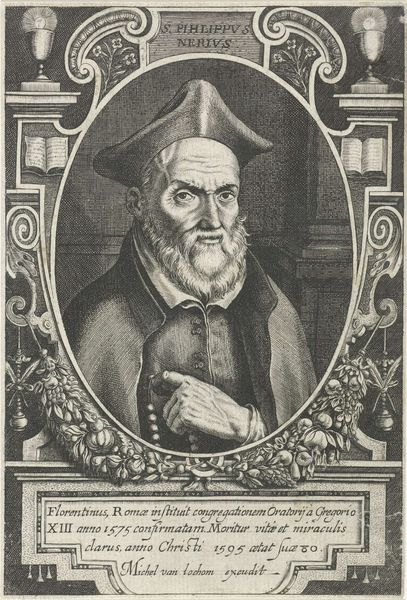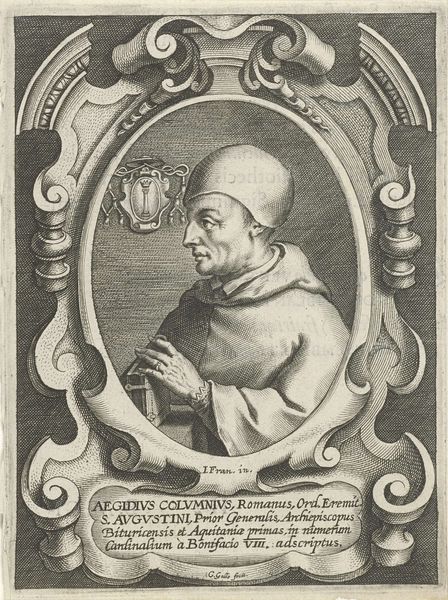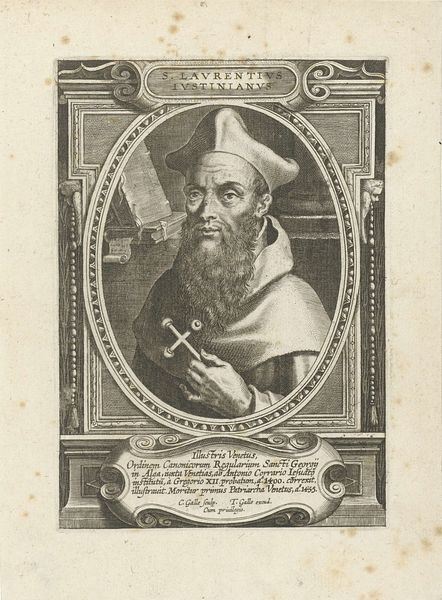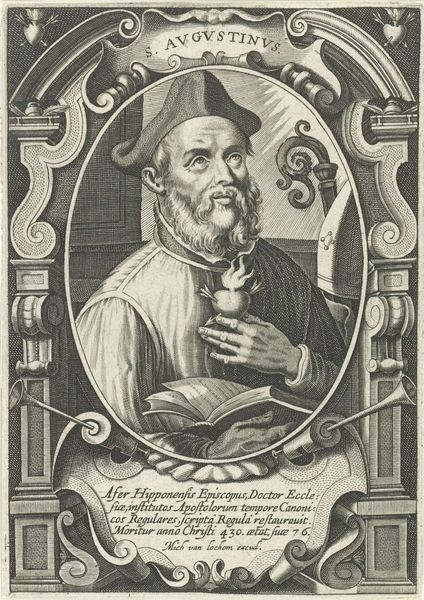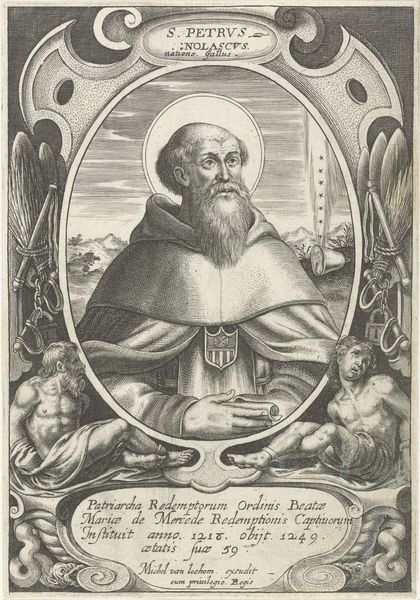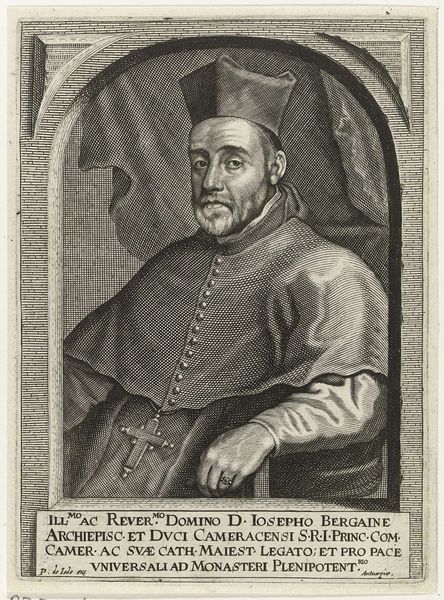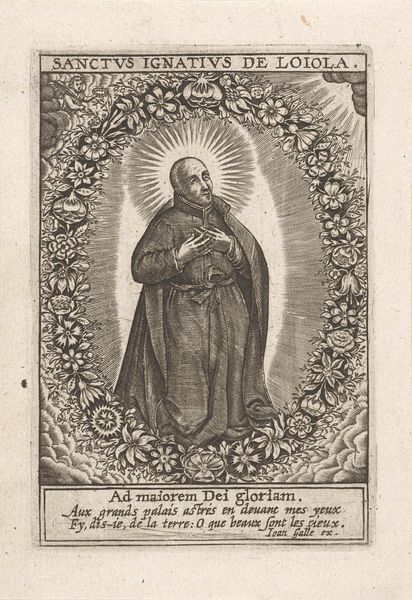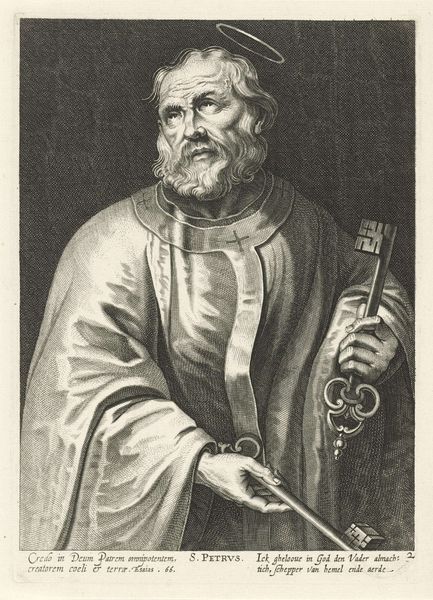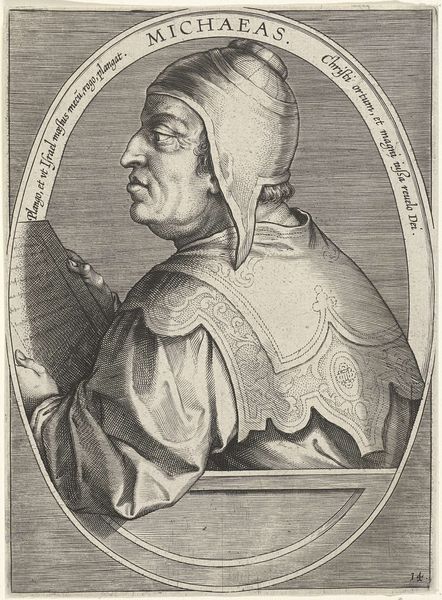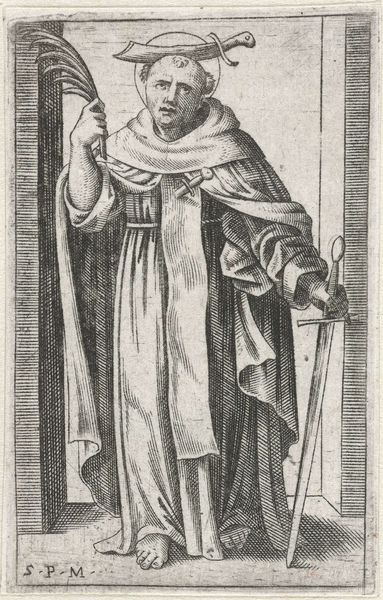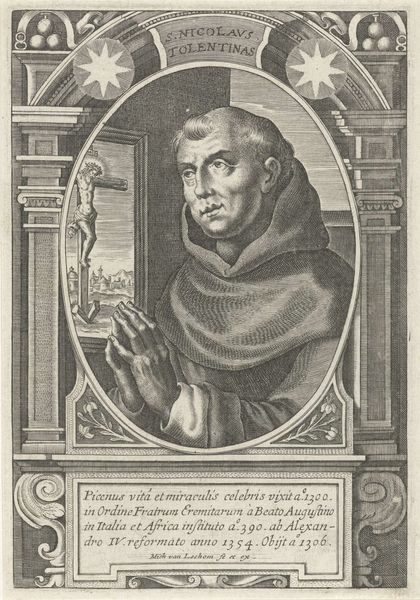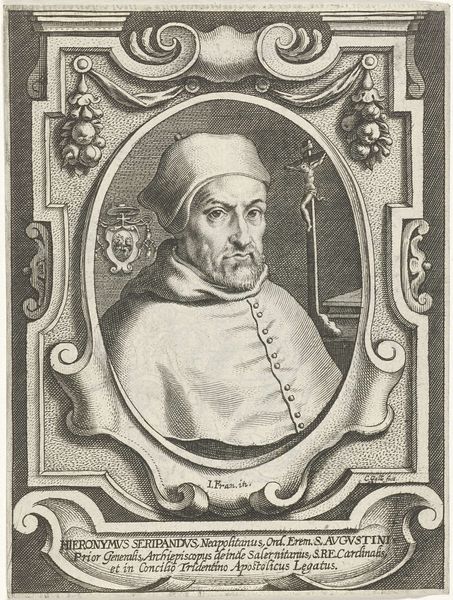
print, engraving
#
portrait
#
baroque
# print
#
old engraving style
#
personal sketchbook
#
pencil drawing
#
portrait drawing
#
engraving
Dimensions: height 118 mm, width 72 mm
Copyright: Rijks Museum: Open Domain
Curator: Let's talk about "Philippus Neri", an engraving from around 1678 to 1694 by Richard Collin. Editor: It has a devotional, pious air. I'm struck by the upward gaze and the clasped hands, which immediately set a tone of humility. Curator: The artistic choices clearly promote Neri's sainthood, portraying him within a radiating halo in the classic Baroque style, which often depicted religious figures with heightened emotion and drama to inspire piety in viewers. How might social conditions and institutional religious patronage inform our view? Editor: It's impossible to separate the creation of this image from the Catholic Church's efforts to maintain influence through the dissemination of pious imagery. Prints such as these, and by implication "Philippus Neri" helped cement ideas about how individuals of faith are expected to perform it. What narratives might the piece offer about social justice or challenge it? Curator: Well, this depiction presents a somewhat sanitized vision of sainthood, absent of social context and intersectional perspectives of who achieves sainthood or why. While there is undeniable artistry here, the work also glosses over complexities regarding Neri's personal life and societal implications that are typically promoted, so we must consider what stories may have been repressed, and what impact this may have had. Editor: Indeed, what this image leaves out is as significant as what it includes. Collin’s print presents not just the saint but how a population were socially engineered to imagine a very idealized and gendered expression of faith, and it continues today, so even now its messages and themes affect those. Curator: These observations emphasize the ongoing resonance of art to influence and reflect larger political and social movements. The image’s history illuminates how the power structures are woven into artistic representation, from religious authority to gender stereotypes. Editor: Exactly, understanding how that history shapes both production and interpretation gives it even more contemporary relevance, showing art's lasting relationship to social power, identity and change.
Comments
No comments
Be the first to comment and join the conversation on the ultimate creative platform.
